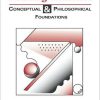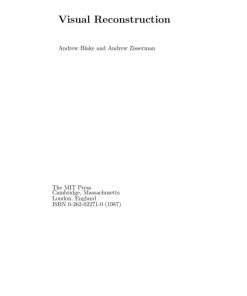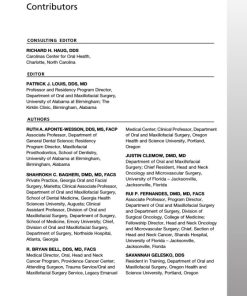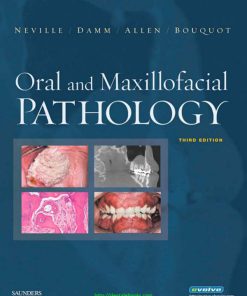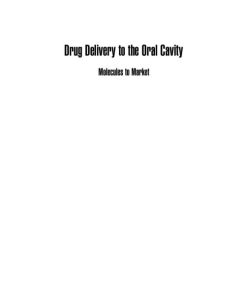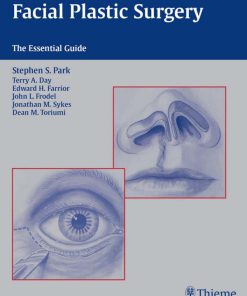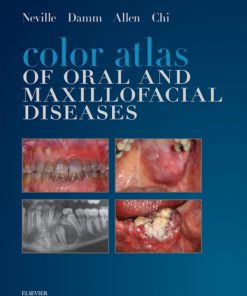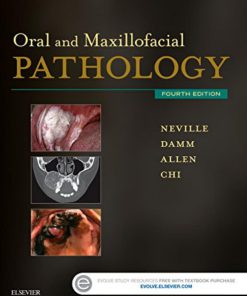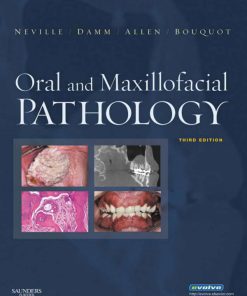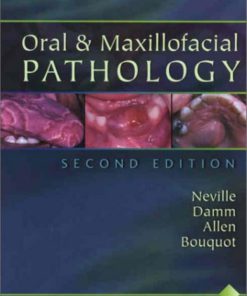Oral Cavity Reconstruction 1st Edition by Terry Day, Douglas Girod ISBN 9781040170304 1040170307
$50.00 Original price was: $50.00.$25.00Current price is: $25.00.
Authors:Informa Healthcare; 1 edition (October 5, 2005) , Author sort:edition, Informa Healthcare; 1 , Published:Published:Apr 2012
Oral Cavity Reconstruction 1st Edition by Terry Day, Douglas Girod – Ebook PDF Instant Download/Delivery. 9781040170304 ,1040170307
Full download Oral Cavity Reconstruction 1st Edition after payment
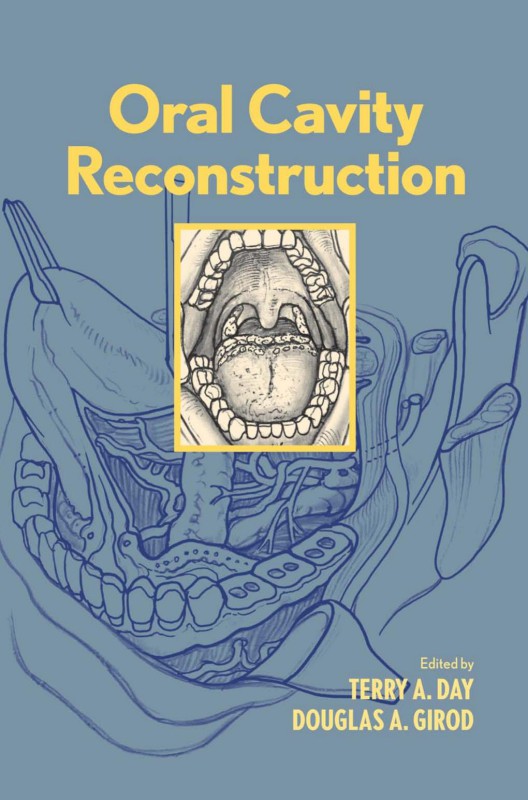
Product details:
ISBN 10: 1040170307
ISBN 13: 9781040170304
Author: Terry Day, Douglas Girod
Oral Cavity Reconstruction 1st Edition Table of contents:
SECTION I: PRE-TREATMENT EVALUATION
1 Principles and History of Oral Cavity Reconstruction
Introduction
Evaluation and Planning
Reconstructive Options
Non-vascularized Grafts
Local Tissue Rearrangement
Regional Flap Transfer
Distant Tissue Transfer
Implants and Biomaterials
Conclusion
References
2 Anatomy of the Oral Cavity and Related Structures
Introduction
Importance of Structure and Function
Lips
Buccal Mucosa and Cheek
Alveolar Ridges
Retromolar Trigone
Floor of Mouth
Hard Palate
Oral Tongue
Mandible
Function
Conclusion
References
3 Functional Aspects and Physiology of the Oral Cavity
Introduction
Embryology
Oral Competence
Normal
Abnormal
Salivation
Normal
Abnormal
Mastication
Normal
Abnormal
Bolus Formation and Propulsion
Normal
Abnormal
Taste
Normal
Abnormal
Conclusion
Acknowledgment
References
4 Pathology of Neoplastic Diseases of the Oral Cavity
Introduction
Oral Squamous Malignancy By Anatomic Site
Anatomic Sites
Lips
Buccal Mucosa
Gingiva and Alveolar Mucosa
Retromolar Trigone
Floor of Mouth
Tongue
Palate
Salivary Gland
Oral Lichen Planus (Olp)
Osteoradionecrosis
Melanoma
Sarcoma
Tissue Procurement
Conclusion
References
5 Benign Lesions and Tumors of the Oral Cavity
Introduction
Mucosa and Soft Tissue Traumatic Fibroma (Irritation Fibroma)
Pyogenic Granuloma (Pregnancy Tumor, Lobular Capillary Hemangioma)
Peripheral Giant Cell Granuloma (Giant Cell Epulis)
Peripheral Ossifying Fibroma (Fibroid Epulis)
Squamous Papilloma
Mucocele
Granular Cell Tumor
Cheilitis Granulomatosa (Miescher’s Cheilitis)
Epulis Fissuratum
Drug-Induced Gingival Hyperplasia
Bone Central Giant Cell Lesion (Giant Cell Reparative Granuloma, Giant Cell Tumor)
Florid Osseous Dysplasia (FOD)
Cherubism
Fibrous Dysplasia (FD)
Langerhans Cell Granulomatosis [Langerhans Cell Histocytosis (LCH)]
Osteosclerosis
Exostosis
Cysts
Periapical Cyst (Radicular Cyst, Root-End Cyst)
Dentigerous Cyst (Follicular Cyst)
OKC and the Nevoid Basal Cell Carcinoma Syndrome
Traumatic Bone Cyst
Odontogenic Tumor
Ameloblastoma
Adenomatoid Odontogenic Tumor
Ameloblastic Fibroma
Myxoma
Odontoma
References
6 Planning and Diagnostic Evaluation in Oral Cavity Reconstruction
Introduction
Evaluation and Planning
History and Physical Examination
Laboratory and Radiologic Studies
Treatment Planning
Surgical Planning—Incisions
Primary and Neck Resection
Reconstructive Options
Conclusion
References
SECTION II: TECHNICAL CONSIDERATIONS
7 Surgical Approaches to the Oral Cavity
Introduction
Evaluation and Planning
Reconstructive Options
Transoral Approach
Midline Glossotomy
Lip Split with Cheek Flap and Mandibulotomy
Degloving Approach to the Oral Cavity
Midface Degloving Approach
Lingual Release Approach
Transhyoid Approach
Conclusion
References
8 Lip Reconstruction
Introduction
Pertinent Anatomy
Evaluation and Planning
Reconstructive Options
Primary Cutaneous Lip Repair
Skin Grafts
Vermilion Repair
Lip Repair Techniques
Technique
Advantages/Disadvantages
Limitations
Simple Lip Advancement Flaps
Technique
Advantages/Disadvantages
Limitations
Circumoral (Karapandzic) Advancement Flaps
Technique
Advantages/Disadvantages
Limitations
Cross-Lip Flaps
Technique
Advantages/Disadvantages
Limitations
Gillies ‘‘Fan” Flap
Flaps from Regions Adjacent to the Lip Complex
Melolabial (Nasolabial)
Flaps Technique
Advantages/Disadvantages
Limitations
Cheek Advancement (Von Burow-Bernard) Flaps
Technique
Advantage/Disadvantages
Limitations
Island Flaps
Other Cervical-Based Flaps
Temporoparietal Scalp Flap
Technique
Advantages/Disadvantages
Limitations
Laterally-Based Forehead Flap
Technique
Advantages/Disadvantages/Limitations
Deltopectoral Chest Flap
Technique
Advantages/Disadvantages
Limitations
Microvascular Free Flap Lip Reconstruction
Advantages/Disadvan tagesd
Limitations
Summary
References
9 Reconstruction of the Buccal Mucosa and Salivary Ducts
Introduction
Evaluation and Planning
Reconstructive Options
Split Thickness Skin Grafts and Acellular Human Collagen Matrix
Local Tissue Flaps
Buccal Fat Pad Grafts
Temporalis and Temporoparietal Fascia Flaps
Cervical Pedicled Flaps (Sternocleidomastoid, Platysma, and Infrahyoid Myocutaneous Flaps)
Regional Myocutaneous Flaps
Free Tissue Transfer and Buccal Mucosal Reconstruction
Lateral Arm, Latissimus Dorsi, Rectus Abdominus, and Lateral Thigh Flaps
Combined Flaps
Reconstruction of the Parotid (Stensen’s) Duct
Summary
References
10 Ventral Tongue and Floor of Mouth
Introduction
Evaluation and Planning
Reconstructive Options
Split-Thickness Skin Graft
Anatomy and Surgical Technique
Indications
Acellular Allograft Dermal Matrix)
Platysma Myocutaneous Flap
Anatomy and Surgical Technique
Indications
Submental Island Flap
Anatomy and Surgical Technique
Indications
Nasolabial Flap
Random Cutaneous Nasolabial Flap, Staged Repair
One-Stage Cutaneous Nasolabial ‘‘Island” Flap
Myocutaneous Nasolabial Flap
Indications
Radial Forearm Free Flap
Anatomy and Surgical Technique
Indications
Lateral Arm Free Flap
Anatomy and Surgical Technique
Indications
Conclusion
Problem-Based Discussion
References
11 Reconstruction of Partial Glossectomy Defects
Introduction
Reconstructive Options
Partial Glossectomy Defects (Less Than 25% of the Anterior Mobile Tongue)
Platysma Flap
Submental Flap
Hemiglossectomy Defects (Less Than 50% of the Anterior Mobile Tongue)
Radial Forearm Fasciocutaneous Flap
General
Indications
Anatomical Considerations
Advantages/Disadvantages
Pre-operative Evaluation
Techniques
Harvest:
Subtotal Glossectomy Defects (50–100% of the Anterior Mobile Tongue)
Other Defects
References
12 Reconstruction of the Base of Tongue and Total Glossectomy Defects
Introduction
Anatomy and Physiology of the Tongue
Evaluation and Planning
Reconstructive Options
Small Tongue Base Defects
Partial Tongue Base Defects
Subtotal or Total Tongue Base Defects
Subtotal or Total Glossectomy Defects
Pedicled Myocutaneous and Muscular Flaps
Anatomy and Surgical Technique
Considerations
Pedicled Latissimus Dorsi Myocutaneous Flap
Anatomy and Surgical Technique
Considerations
Pedicled Infrahyoid Flap
Fasciocutaneous Free Flaps—Radial Forearm Free Flap
Anatomy and Surgical Technique
Considerations
Ulnar Forearm Free Flap
Anatomy and Surgical Technique
Considerations
Lateral Arm Free Flap
Anatomy and Surgical Technique
Considerations
Scapular and Parascapular Free Flaps
Anatomy and Surgical Technique
Anterolateral Thigh Free Flap
Anatomy and Surgical Technique
Lateral Thigh Free Flap
Anatomy and Surgical Technique
Omental Free Flap
Myocutaneous and Muscular Free Flaps—Rectus Abdominis Free Flap
Anatomy and Surgical Technique
Considerations
Latissimus Dorsi Free Flap
Gracilis Free Flap
Tensor Fascia Lata Free Flap
Adjunctive Measures in Tongue Base and Glossectomy Reconstruction
Sensory and Motor Innervation in Tongue Reconstruction
Other Procedures to Improve Swallowing Function
Conclusion
The Future of Base-of-Tongue and Total Glossectomy Reconstruction
References
13 Hard Palate Reconstruction
Introduction
Evaluation and Planning
Reconstructive Options
Decision Making Tips
Preoperative Considerations
Special Surgical Requirements
Conclusion
References
14 Reconstruction of the Soft Palate and Velopharyngeal Complex
Introduction
Evaluation and Planning
Reconstructive Options
Prosthetic Therapy
The Dynamic Pharyngoplasty
Asymmetrical Pharyngeal Flap
Conclusion
References
15 Cleft Lip and Palate
Introduction
Epidemiology
Embryology
Evaluation and Planning
Cleft Lip and Palate Classification
Secondary Palate
Timing of Cleft Repair
The Unilateral Cleft Lip Deformity—Pathologic Anatomy
Reconstructive Options
Unilateral Cleft Lip Repair
Rotation–Advancement Repair of the Unilateral Cleft Lip Deformity
Measurement and Flap Design
The Bilateral Cleft Lip Deformity—Pathologic Anatomy
Bilateral Cleft Lip Repair
Palatoplasty
Timing of Cleft Palate Repair
von Langenbeck Palatoplasty
Three-Flap Palatoplasty
Two-Flap Palatoplasty
Furlow Palatoplasty
Preferred Techniques
Conclusion
References
16 Dental and Prosthetic Reconstruction of the Oral Cavity
Introduction
Evaluation and Planning
Reconstruction Options
Chemotherapy/Radiation Therapy
Maxillary Defects: Hard Palate
Maxillary Defects: Soft Palate
Mandible/Tongue Defects
Complex Midface Defects
Decision Making Tips
Conclusion
References
17 Mandibular Reconstruction
Introduction
Evaluation and Planning
Reconstructive Options
Non-Vascularized Grafts
Free Bone Grafts
Reconstructive Bars/Plates
Vascularized Grafts
Pedicled Osteomyocutaneous Flaps
Free Flaps
Location of Mandibular Defects
Anterior Defects
Lateral Defects
Posterior Defects (Condylar)
Conclusion
References
18 Composite Defects of the Oromandibular Complex
Introduction
Relevant Anatomy
Evaluation and Planning
Reconstructive Options for The Oromandibular Complex
Regional Tissue Transfer
Pectoralis Major Myocutaneous Pedicled Flap (PMMF) Combined With a Reconstruction Plate
Technique
Reconstruction Plate Application
Distant Tissue Transfer
Fasciocutaneous Radial Forearm Free Flap Combined with a Reconstruction Plate
Technique
Osteocutaneous Fibula Free Flap
Technique
Osteocutaneous RFFF
Prophylactic Internal Fixation of the Radius Bone
OCRFF Modified Harvest Technique
Scapula Osteocutaneous Free Flap
Technique
Multiple Flaps for The Reconstruction of Oromandibular Defects
Implants and Biomaterials
Mandible Substitutes
Decision-Making Tips
References
19 Secondary Oral Cavity Reconstruction
Introduction
Evaluation and Planning
Reconstructive Options
Reconstructive Options for Secondary Composite Defects
Decision-Making Tips
Conclusion
References
SECTION III: POST-RECONSTRUCTIVE ISSUES
20 Speech and Swallowing Rehabilitation
Introduction
Vocal Subsystems
Swallowing
Evaluation Methods and Observations
Instrumental Examination of Voice, Speech, and Swallowing
Voice, Resonance, and Speech Disorders
Treatments for Disorders of Voice, Resonance, and Articulation
Swallowing Disorders
Disturbed Lingual Motility
Delayed Initiation of the Pharyngeal Swallow
Incomplete Hyolaryngeal Excursion
Paretic/Paralytic/Partial Intrinsic Laryngeal Valving
Pharyngeal Paresis/Paralysis
Swallowing Treatment Strategies
Cognitive Stimulation
Modification of Bolus Variables
Compensatory Postures/Positions
Sensitization Techniques
Compensatory Maneuvers
Isometric Exercise
Summary
Appendix A
Swallowing Abnormalities Commonly Associated with Oral and Pharyngeal Cancer Resections
References
21 Outcomes Research in Oral Cavity Reconstruction
Introduction
Global Qol Instruments
Head and Neck Instruments
Functional Status After Reconstruction
Qol After Reconstruction
Cost-Effectiveness Issues
Summary
References
22 New Horizons in Oral Cavity Reconstruction
Introduction
Distraction Osteogenesis
Bone Growth Factors
Resorbable Implants
Tissue Engineered Oral Mucosal Lining
Conclusion
References
Index
People also search for Oral Cavity Reconstruction 1st Edition:
flap for oral cavity reconstruction
submental flap for oral cavity reconstruction
reconstruction of oral cavity defects
intraoral flaps for oral cavity and oropharyngeal reconstruction
You may also like…
eBook PDF
Visual reconstruction 1st Edition by Andrew Blake, Andrew Zisserman ISBN 0262524066 9780262524063


